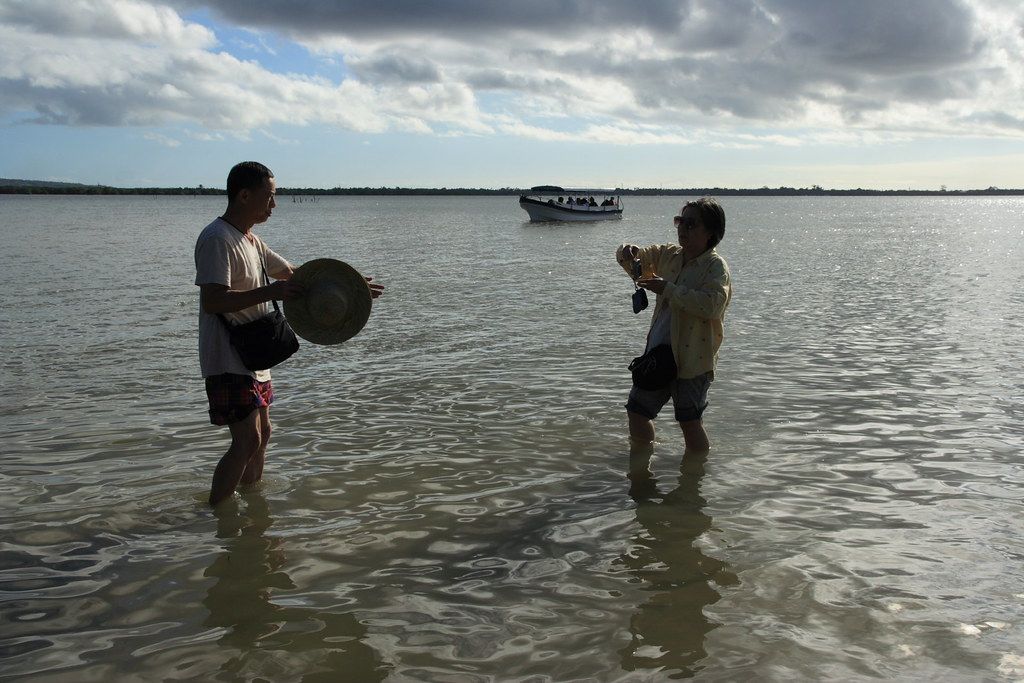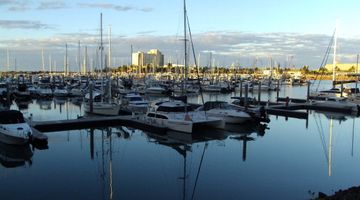Bali Indonesia – Your Quick Travel Guide
In a nutshell
The very utterance of the word ‘Bali’ evokes sun-kissed imaginings of golden shores, rose-petal offerings, incense-shrouded temples, majestic volcanoes and stretches of crystal-clear, azure waters lapping against looming cliffs.
Why go to Bali
While it is one island in the Indonesian archipelago, there are in actual fact many different destinations to explore and experience while in Bali. From the spiritually-rich destination of Ubud with its rolling green rice paddies, ornate and exquisite temples, yoga retreats and jungle waterfalls; to the party-centric, chaotic destination of Kuta – there is something for every type pf traveller on the island of Bali.
Ubud can be classified as the heart and soul of Bali and with its all-encompassing natural beauty, warm and genuine locals, and with the hidden spiritual meaning behind almost everything; it’s not difficult to understand why. Ubud enthrals, captivates and creates a lasting memory on all who walk its soil and breath in its air. Travellers visit Ubud to attend yoga retreats, browse museums and art galleries, stroll through the Tegallalang Rice terraces, go waterfall chasing (to some of the most breath-taking waterfalls we’ve ever seen), attend Indonesian cooking courses, visit Ubud Monkey Forest, and drink copious amounts of fresh juices on wooden balconies in the trees.
Kuta on the other hand is the rowdy, unruly sister of Ubud who prefers a lavish rooftop party to morning yoga; and prefers two-for-one bucket specials rather than freshly squeezed carrot and ginger juice. Kuta lures in travellers who want to party until the early hours of the morning, go club-hopping and wish to submerge themselves into the dizzying nightlife scene that this destination is so famous (infamous?) for.
Travellers longing for luxurious resorts, upscale boutique shopping opportunities and first-class, decadent beauty pampering would do well to head to Seminyak. This destination in Bali is for the fashionistas, art-enthusiasts, wining and dining crowds and beach bums who long to sip icy, tropical cocktails on one of the most upscale beaches in Indonesia. When in Seminyak be sure to check out Petitenget Temple, Seminyak Beach, Echo Beach for a surf, the Nyaman Gallery, and Biasa Art Space.
For all those who have a special interest in marine life and an avid interest in what occurs below the turquoise waves, be sure to head to Amed - a rather expansive coastal strip of fishing villages in East Bali where travellers can escape the crowds for a few days. Amed offers travellers the chance to go wreck diving, learn to free dive and spend hours lazing on the beach reading a thick, holiday novel. Top highlights of Amed include The Jemeluk Underwater Gallery, Lipah Bay and Japanese Shipwreck, a climb up Mount Agung, a visit to Tirta Gangga Water Palace and spend the day cycling the countryside or kayaking the salty waves. Definitely a hotspot for the adventurous and outdoorsy.
When to go to Bali
The ideal time to visit Bali is during the months of April, May and June as this allows travellers the opportunity of avoiding the monsoon season which occurs between October and March. It also allows travellers to skip the crowds of the busier months of June to August, and the December and January festive season.
Where to stay on Bali
Hands-down, Bali offers travellers the best accommodation options in all of Indonesia. From inexpensive backpacker dormitories, and budget surfer bungalows right on the beach, to 5-star resorts filled with starry-eyed honeymooners, all the way to private family villas; Bali has it all. As a general rule Bali’s accommodations are very well priced, of very high standards, and service is mostly excellent. Ubud is the spot for those longing for culture, seclusion and nature, Kuta is geared towards party animals and Seminyak towards shopaholics and beauty-spa enthusiasts.
Where and what to eat on Bali
Food in Bali. Where to start? Meat-eaters, vegetarians, vegans, and those who eat it all – Bali is home to some of the best and most varied food that we’ve ever had the pleasure of experiencing. The island offers an overwhelming assortment of food options and everyone’s food preferences are well taken care of. From tasty and nutritious local dishes sold from kaki limas (5-legged food carts); lively food markets filled with every dish under the sun; to restaurants serving all sorts of western food; and famous, neon-lit, American fast-food chains; there is something for everyone. Loosen your waist-bands and arrive hungry, Bali is every foodie’s paradise.
How to get around Bali
Being the big island that it is, travellers are able to pick from a selection of transport options when deciding how to get around the various destinations on the island.
For longer distances travellers can opt for bus rides, pre-arranged tours, a rental car with a private driver, taxis or bemos -BaIi’s traditional mode of transportation which is essentially an open-aired minibus. Travel is relatively inexpensive and with many locals speaking decent English, getting around is reasonably hassle-free and mostly reliable. For those who wish for the freedom of independent travel, renting a motorbike or scooter and zipping around the island is as easy and unrestricted as it comes. Be sure to wear a helmet and to only select this option if you are an experienced driver.
How to get to and from Bali
By air
The fact that Bali is a well-connected tourist hub will mean that most international visitors will touch-down at Bali Ngurah Rai International Airport, also known as Denpasar International Airport from all over the world.
For visitors already in Indonesia, this airport also receives a steady stream of domestic flights every day too from the likes of Lion Air, Tiger Air, Indonesia Air Asia and many, many others.
By bus
Another way of getting into Bali can be done via bus from all major cities of Java and Lombok. These buses are slow but are fortunately able to connect with ferries for any sea crossings.
By ferry
Getting onto the island of Bali is also possible via sea and ferries, catamarans, speedboats and cruise boats ply various routes daily.
Getting a ferry across from Ketapang on the island of Java to Gilimanuk in west Bali is cheap, fast and frequent. The ferries depart all day and all night and leave at intervals of around 20 to 30 minutes. The journey takes a speedy 30 minutes and is something of a rite of passage for backpackers heading to the tropical paradise that Bali is so well-known for. Tickets cost around IDR 8,000 for adults and IDR 6,000 for children under 12 years of age.
For those wishing to travel to Kuta in Bali from Padangbai, any of the Gili Islands, Lombok or Nusa Lembongan; this is possible via any number of daily cruise boats, speedboats or catamarans that arrive at the Benoa Harbour nearby to Kuta. These various journeys take anywhere from an hour and a half to around 2 and a half hours.
Another option is also public ferries which depart every few hours from Lembar and Lombok and arrive in Padangbai after +- 4 hour trip across the waves. Ticket prices are around IDR 40,000 for a one-way ticket and although frequently crowded, the journey is rather pleasant.
Is Bali a safe place to visit?
As a whole, Bali is a safe destination and few tourists experience any real problems or incidences with crime.
As with all countries, look after your belongings, remain vigilant, don’t drink and drive and be careful when swimming as rip currents do occur.
It is also worthwhile noting that Bali has enforced the death penalty for possession, trafficking, importing and exporting of any and all illegal drugs including marijuana.






















































